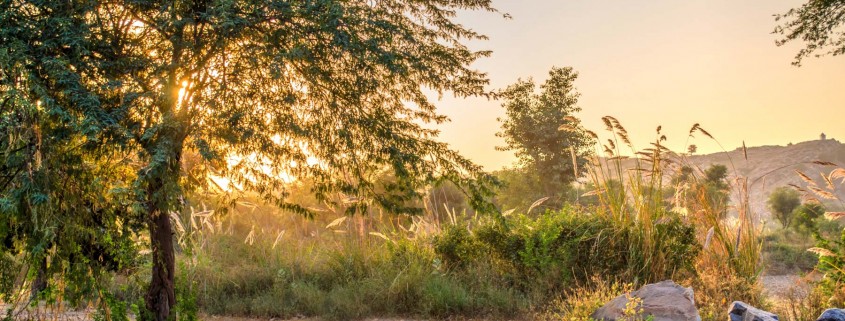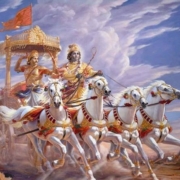The Original Form of Ekadashi
Mahanidhi Swami
The Ekadashi fasting day is extensively described in Hari-bhakti Vilasa. Sanatana Goswamipada, quoting numerous Vedic scriptures, defines the basic Ekadashi thus: “All humans, especially Vaisnavas, should NOT EAT ANYTHING on Ekadashi, the day of Sri Hari, hari-vasara.”
In Narada Purana, Lord Shiva told Durga, “Again and again the Puranas proclaim, ‘On Ekadashi, Do not eat, Do not eat!’’’ (HBV 12.12)
In Bhakti-sandarbha anu. 299, Sri Jiva Goswamipada quotes many shastras to make the same point. For example, the Gautamiya-tantra says, “If by madness a Vaisnava eats anything on Ekadashi, then his worship is worthless!” Vishnu-yamala states, “If one is normal and healthy, he should not eat anything on Ekadashi.”
So it is clear that the basic and original Ekadashi Vrata is a day of complete fasting to facilitate more surrender and more offerings of devotion to Bhagavan Sri Krishna.
It is amazing how in the entire Ekadashi fasting day description, Srila Sanatana Goswamipada does not mention one word about eating this or avoiding that type of food. In one verse, however, he gives a concession for eating on Ekadashi, and even that is restricted to a few persons. He quotes the Markendeya Purana: “A child, an elderly or sick person may take ONE MEAL consisting of milk, fruits and roots and that only AT NIGHT.” (HBV 12.91)
In other words, Srila Sanatana Goswamipada is telling all of us, who are normal and healthy by Krishna’s grace, to FAST COMPLETELY ON EKADASHI. This is the basic Ekadashi—austere, powerful and beneficial.
Of course, there are many other approaches to fasting on Ekadashi given by various gurus, institutions and individual family traditions. Ultimately, the best way of observing the austerity of Hari-vasara is to follow the teachings of one’s mentors on the devotional path.
We are describing the original form of Ekadashi observance to encourage old devotees to do more, and to show new devotees the ideal path outlined in our sacred books. Many devotees we know follow the basic, traditional Ekadashi of not eating anything, plus not drinking even a drop of water! Besides being the basic observance of Ekadashi prescribed by our mahajanas, a complete fast is an excellent means for improving both spiritual and material health.
Srila Sanatana Goswamipada and all the Vedas describe the Ekadashi vrata as part of a “penance triad”. Although very difficult in the modern age, this fasting package includes three days of austerity i.e. Dashami, Ekadashi and Dwadashi (10th, 11th and 12th). However, the full basic observance of the one fasting day of Ekadashi is practical and prescribed for most sadhakas of today.
Still, sadhakas can respect and honor these three holy days by following Hari-bhakti Vilasa’s instructions about eating, which are listed below.
10th Day Dashami: Eat only one time, the following foods ONLY; winter white rice, mung dal, sesame seeds, root bulbs minus taro, amla, banana, jackfruit, mango, tamarind, cow’s ghee, milk & yogurt, Sind (ekadashi) or sea salt, pepper, cumin, ginger, and sugar without molasses.
BUT DON’T EAT: honey, oil [fried foods], chickpeas (channa), flour i.e. rotis, bread, etc., masura dal or leafy vegetables. (HBV 13.10-15)
11th Day Ekadashi: Chant Hare Krishna, read the Bhagavata and dance in delight, but keep food and water far from your sight! Ekadashi Devi ki jai ho!
12th Day Dwadashi: Eat only once, but DON’T EAT: honey, oil [fried foods], chickpeas (channa), flour i.e. rotis, bread, etc, and masura dal. (HBV 13.260-264)
To close this article, we will cite Srila Sanatana Goswamipada’s perfect definition of fasting. And this is the type of fasting we should all do every day of our devotional lives:
“To remain steady and steadfast, even in the face of sin by cultivating good qualities, and to give up all sense enjoyment is called FASTING.” (HBV 13.35)
Ekadashi fasting ki jai! Jai Jai Sri Radhe!







Leave a Reply
Want to join the discussion?Feel free to contribute!